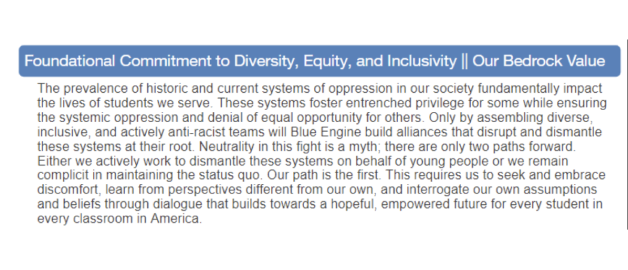CASE STUDY
The Greater Milwaukee Foundation
As of 2019, Milwaukee was the most racially segregated metro area in the US, with Black residents making half the median income of white residents. In recognition of these disparities and the systemic biases that underlie them, GMF made a “generational commitment” to advancing racial equity and inclusion, setting racial equity as the organization’s “north star”.
Mission & vision, Programs & activities, Operations, Governance, Culture
Background
Founded in 1915, The Greater Milwaukee Foundation (GMF) is the largest community foundation in Wisconsin. Since its inception, GMF has awarded more than $862M in grants. Over the past twenty years, responding to high levels of racial inequity in the city, GMF has committed to racial equity as its “north star”.
The equity journey
As of 2019, Milwaukee was the most racially segregated metro area in the US, with Black residents making half the median income of white residents. In recognition of these disparities and the systemic biases that underlie them, GMF made a “generational commitment” to advancing racial equity and inclusion, setting racial equity as the organization’s “north star”.
Mission & Vision
In 2010, with the arrival of President and CEO Ellen Gilligan, the board approved new areas of strategic focus for the organization, including the prioritization of racial equity and inclusion. This marked a major shift in GMF’s history, moving away from “diversity” as the primary solution to racial disparity, towards a theory of change that recognizes systemic racial bias across the region. Extensive work over the subsequent five years culminated in the board approving a “generational commitment” to advancing racial equity and inclusion in 2016, and then doubling down on this commitment in the organization’s 2020-2025 strategic vision. The current GMF mission, vision, and strategy reflect both a recognition of systemic racism and a commitment to achieving equity. For example, the latest GMF strategic vision reads: “there’s a fault line running through every system we’ve built in our community: racism.” And the organization’s vision statement aspires to a Greater Milwaukee that is: “a vibrant, economically thriving region comprised of welcoming and inclusive communities that provide opportunity, prosperity and a high quality of life for all.”
Program & activities
In implementing its “generational commitment” to racial equity, GMF has focused its programming explicitly on equity initiatives, and directing support to the most underserved neighborhoods in the city. As a grantmaker, GMF awarded $1.2M in its first set of grants explicitly focused on advancing racial equity, in 2015. In response to the 2016 police shooting of Syville Smith and the subsequent unrest, GMF launched the Reasons for Hope fund, designed to support community-based, neighborhood-level actions and organizations with small grants. In 2018, GMF launched the Connected People and Thriving Communities grants, which focus on providing professional skills development, after-school programming, and other social supports in the Sherman Park East and North Division neighborhoods. These grant processes were designed to involve community members in making recommendations and decisions on grants. Furthermore, as a way to foster greater diversity in local nonprofit leadership, GMF created a requirement that all prospective grantees have at least 10% people of color on their boards.
The organization’s 2020-2025 strategic vision, called “Milwaukee for All,” continues to build on these successes. Via the ThriveOn collaboration with the Medical College of Wisconsin and Royal Capital Group, GMF plans to invest in the historic Martin Luther King Drive, building a community hub to drive economic development and neighborhood connectedness. The organization’s new ThriveOn initiative is predominantly supported by Black philanthropists, an intentional strategy by GMF. According to CEO Ellen Gilligan: “Engaging more diverse donors in collaborative philanthropy is part of our new era of philanthropy that is more inclusive, collaborative, antiracist and impactful.” In the strategic vision, GMF also commits to advocating for increased early childhood education programming, and for increases in affordable housing in priority neighborhoods.
Operations
In 2019, GMF made a commitment to increase the diversity of the investment managers working with GMF’s Investment Pool. As of 2021, more than 22% of GMF’s investment managers are people of color, making the foundation a national leader in this area. In an effort to bring in more donors of color, GMF sought to increase representation of people of color on the foundation’s Young Professional Advisor Council; as of 2019, the share of members of color had increased from 12.5% to 50%.
Governance
A key aspect of GMF’s equity journey has been increasing diversity on the board of directors, and developing board leadership on the issue of racial equity. In 2013, GMF formed a task force on its board dedicated to racial equity and inclusion, a move that reverberated throughout the organization. The board has been engaged in every stage of the organization’s equity journey, from the 2016 “generational commitment” to racial equity to the 2020 “Milwaukee for All” strategic plan.
Culture
GMF implemented new trainings and opportunities for staff in order to cement racial equity as a key part of the organization’s cultural bedrock. For example, GMF provided opportunities for staff to engage in community service, building connections and providing first-hand perspective. GMF also developed a racial equity and inclusion curriculum that is now part of mandatory onboarding for all staff. These offerings, as well as the organization’s strident calls for racial equity in Milwaukee, have made the workplace more welcoming and comfortable for staff of color. According to Darlene Russell, Director of Community Engagement at GMF: “I’ve experienced racism and microaggressions in the past; now I can feel like I can show up fully present as a Black woman…and the health benefits of that are huge.”
Related case studies
Tell your equity story
We would like to hear about progress your organization has made on its equity journey.






